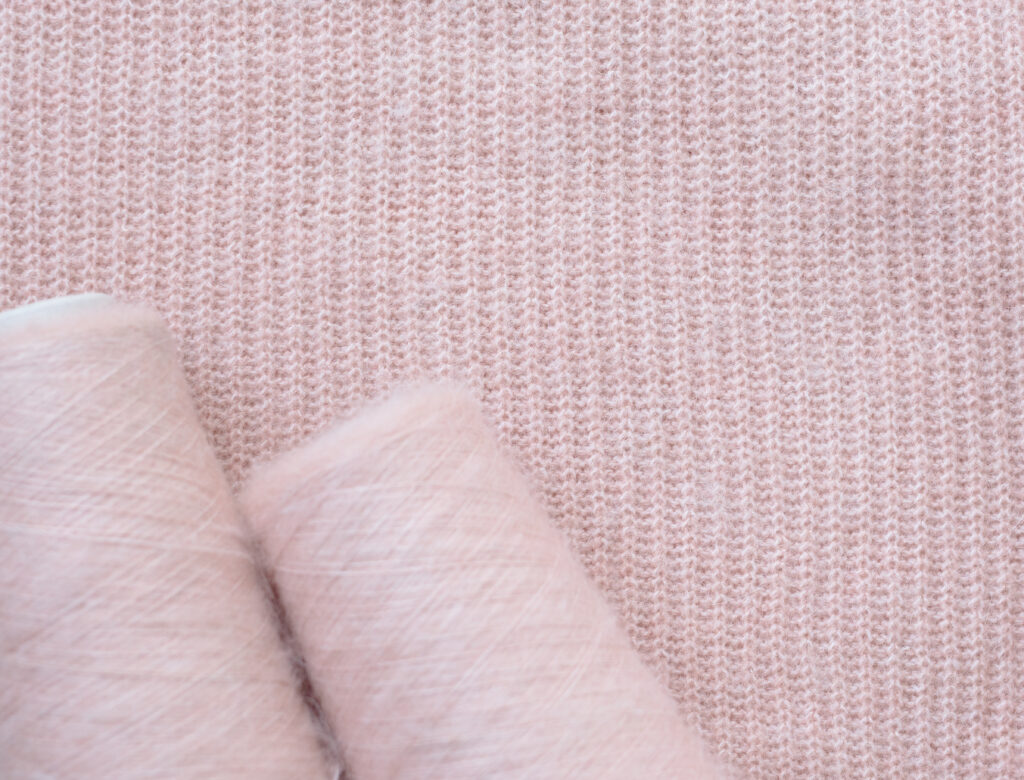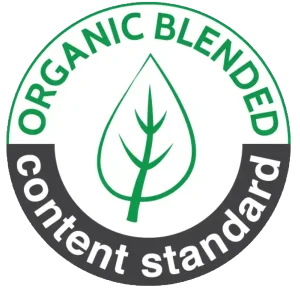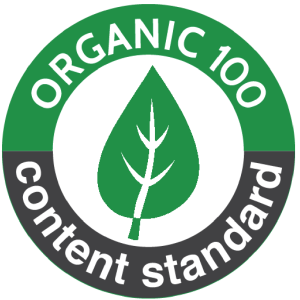Explore the details of antibacterial knitted fabric: from its definition and production process to practical applications and health benefits. This article provides in-depth information, updates on new technologies, and a guide to choosing quality products.
1. What is Antibacterial Knitted Fabric?
Nội dung tóm tắt
Toggle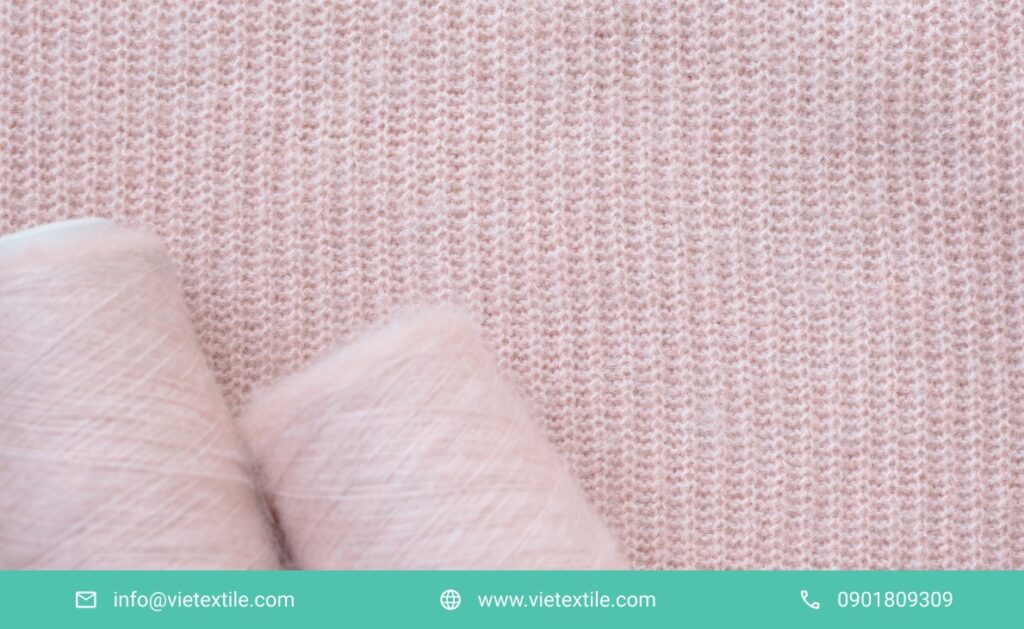
If you’ve ever worried about odor-causing bacteria on your clothes or a child’s sensitive skin, antibacterial knitted fabric might be the answer.
This is a type of fabric woven from fibers with the ability to inhibit bacteria and fungi, or it’s treated with a special technology to eliminate harmful microorganisms.
Compared to woven fabrics, the knitted structure is more elastic, soft, and form-fitting. This is why, when combined with its antibacterial properties, this fabric is favored in fields that require direct skin contact, such as underwear, sleepwear, sportswear, and especially children’s clothing.
Another plus: modern antibacterial knitted fabric is typically non-irritating to the skin, eco-friendly, and holds many international certifications like OEKO-TEX or GOTS.
2. Production Process and Technology
Antibacterial knitted fabric can be created in two ways: treating the yarn before knitting or applying a finishing treatment after the fabric has been knitted. Each technology offers its own distinct effectiveness and value.
2.1. Technology Integrating Antibacterial Agents into the Yarn
This is the most modern method, often applied to synthetic fibers like polyester and polyamide. During yarn production, antibacterial agents such as nano-silver, zinc, or copper are incorporated into the core or surface of the fiber. This mechanism helps the antibacterial properties last for a long time—even up to 50-100 washes without losing effectiveness.
2.2. Finishing Treatment with Antibacterial Chemicals
This method is applied to both natural and synthetic fibers. After the fabric is knitted, the surface is immersed or coated with a layer of antibacterial active agents. This method is flexible but its effectiveness typically lasts for only about 20-30 washes, depending on the chemical used.
Some common technologies include:
- Nano-silver (Ag+): Kills bacteria by breaking down their cell walls. It can inhibit over 650 strains of bacteria (according to NCBI, 2023).
- Copper ions (Cu2+): Fights fungi and microorganisms, widely used in medical products.
- Chitosan: Extracted from shrimp shells, it is eco-friendly and used for children’s and organic fabrics.
3. Pros and Cons of Antibacterial Knitted Fabric
3.1. Pros:
- Superior Antibacterial Properties: Reduces odor-causing bacteria, which is especially useful for sportswear, socks, and underwear.
- Skin-Friendly: The fabric is soft and non-irritating, making it ideal for infants and people with sensitive skin.
- Stretchy and Breathable: Thanks to its knitted structure, the fabric is not only durable but also allows the skin to “breathe” better.
- High Durability: Modern nano-technology helps maintain the antibacterial properties after many washes.
3.2. Cons:
- Higher Cost: Due to technology and raw material costs, this fabric is about 30–50% more expensive than regular fabric.
- Effectiveness May Decline: If a surface treatment method is used, the antibacterial ability will gradually decrease with each wash.
According to a 2024 survey by Textile Exchange, 67% of high-end fashion brands in Asia are shifting to using antibacterial fabric in at least 30% of their product lines.
4. Applications of Antibacterial Knitted Fabric in Daily Life
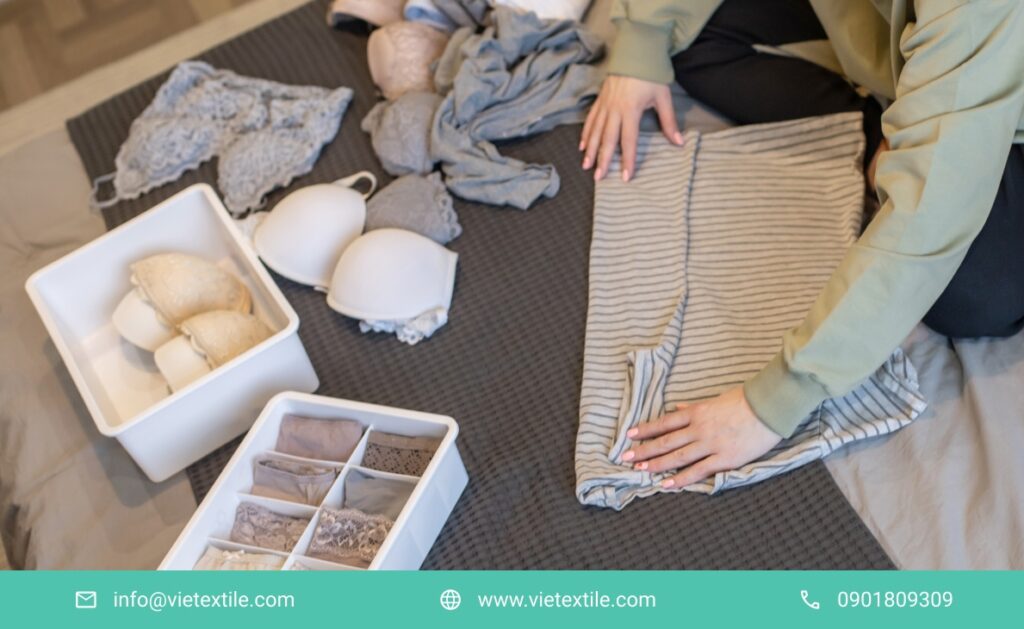
4.1. Children’s Fashion:
Children have weak immune systems and delicate skin that is prone to irritation. Using antibacterial fabric helps prevent rashes, redness, and dermatitis caused by sweat and dirt. Brands like Lullaby, Nous, Next, and Uniqlo Baby have integrated antibacterial knitted fabric into their clothing products for babies aged 0-3.
4.2. Sportswear and Underwear:
This is a fertile ground for antibacterial knitted fabric to showcase its strengths. The workout environment causes a lot of sweating—an ideal “feast” for bacteria. With its deodorizing feature, the fabric helps wearers feel dry, confident, and clean.
4.3. High-End Home Furnishings:
Beyond fashion, products such as pillows, blankets, and bedsheets made from antibacterial fabric are also gaining popularity in 4- and 5-star hotels. Customers are increasingly valuing “invisible hygiene,” creating a valuable niche for antibacterial home furnishings.
5. Guide to Choosing and Maintaining Antibacterial Knitted Fabric
5.1. Criteria for Choosing Quality Fabric:
- International Certifications: Look for products with OEKO-TEX Standard 100 or ISO 20743 antibacterial certification.
- Smell Test: High-quality antibacterial fabric has a low sweat-odor retention and doesn’t have a pungent smell like low-quality chemically treated fabrics.
- Reputable Brands: Buy from reliable sources, avoiding fakes—especially for children’s fabrics.
5.2. Washing and Care Instructions:
- Hand wash or machine wash on a gentle cycle (below 40°C).
- Do not use strong fabric softeners with bleaching properties.
- Hang dry in a well-ventilated area, avoiding prolonged direct sunlight to protect the antibacterial layer.
- Pro-tip: You can use diluted white vinegar to soften the fabric and enhance its natural antibacterial properties.
6. Trends and the Future of Antibacterial Knitted Fabric
According to a 2024 Statista report, the global antibacterial fabric market is projected to reach $18.2 billion by 2026.
6.1. Strong Growth in Vietnam:
After the COVID-19 pandemic, Vietnamese consumers increasingly prioritize “health-friendly” products. Brands like VieTextile are boosting domestic production of antibacterial knitted fabric, supplying both export and local apparel markets.
6.2. Continuous Innovation in Technology:
New-generation nano-silver has self-cleaning capabilities. Recycled materials are being used in antibacterial fabrics to move toward a “dual-sustainable” product: clean, green, and safe.
7. Conclusion
If you are looking for a source of high-quality antibacterial knitted fabric suitable for children’s wear, underwear, or sportswear, contact VieTextile today for a consultation on the latest fabric samples, free testing, and a competitive quote.
Frequently Asked Questions (FAQs)
- Is antibacterial knitted fabric durable? Yes, if it is treated with integrated antibacterial fiber technology from the start. Some types can maintain effectiveness after 50 washes.
- Is antibacterial knitted fabric eco-friendly? Yes, especially if natural antibacterial agents like chitosan or bio nano-silver are used. Additionally, recycled fibers are also being prioritized.
- Should antibacterial knitted fabric be used in summer? Yes, absolutely. The fabric is lightweight, stretchy, and prevents sweat odor—making it ideal for hot and humid tropical climates like Vietnam.
- Does this fabric cause allergies? If it is OEKO-TEX certified, no. On the contrary, it can help prevent skin allergies.

